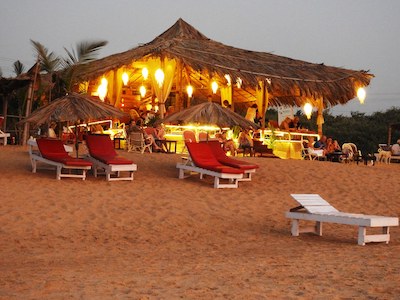
Goa – Overview
The 130 km long coastline of Goa on the golden Konkan coast of the Western Ghats is along the Arabian Sea. This small former Portuguese enclave is one of India’s most popular tourist spots, both for the domestic and international traveller. The name is derived from the Konkani word `Goyan’, which means a patch of tall grass.
Once a great Hindu stronghold, Goa was a part of the grand Mauryan empire, around 3rd century B.C.
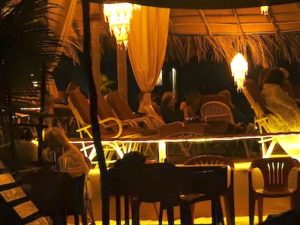 The Satvahanas of Kolhapur and later the Chalukyas of Badami, took over the governance. Other dynasties followed, including a short-lived Muslim invasion. Thereafter, the Vijayanagar Empire established itself for almost a century. This era ended with the arrival of the Sultans of Gulbarga, around 1469 AD. Then the rule passed on to the Adil Shah of Bijapur. Goa soon became a bone of contention between the Dutch, English, French and Portuguese, all vying for its possession. Ultimately, in 1510, the Portuguese conquered Goa. Alfonso de Albuquerque led the invasion. After ruling for four centuries, in 1961, fourteen years after the country’s independence, the Portuguese handed over possession of this colony to India.
The Satvahanas of Kolhapur and later the Chalukyas of Badami, took over the governance. Other dynasties followed, including a short-lived Muslim invasion. Thereafter, the Vijayanagar Empire established itself for almost a century. This era ended with the arrival of the Sultans of Gulbarga, around 1469 AD. Then the rule passed on to the Adil Shah of Bijapur. Goa soon became a bone of contention between the Dutch, English, French and Portuguese, all vying for its possession. Ultimately, in 1510, the Portuguese conquered Goa. Alfonso de Albuquerque led the invasion. After ruling for four centuries, in 1961, fourteen years after the country’s independence, the Portuguese handed over possession of this colony to India.
There is a juxtaposition of old Portuguese architecture, flavour and lifestyle to it’s history. Its unending beaches, the pristine beauty of the seascape, its mystical hills and groves, the rhythmic pounding of the sea, its swaying palms – all make it a fairytale land for the traveller.
The state a is geographically divided into North and South Goa.
North Goa
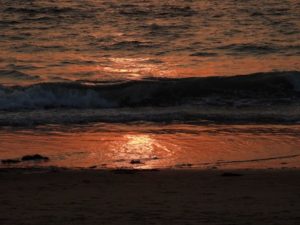 Main places of interest include the capital Panaji (Panjim), Mapusa, old Goa and the stretch of famous beaches for which Goa is well known.
Main places of interest include the capital Panaji (Panjim), Mapusa, old Goa and the stretch of famous beaches for which Goa is well known.
Panaji
On the South bank of the river Mandovi, Panaji is the capital of the state. The Portuguese heritage is visible everywhere in the architecture, the many churches, the friendly casual ambience and the bars and cafes.
Old Goa
10 kms from Panaji is the former Portuguese capital of old Goa, where it is worth spending a day to see the old churches and remains of the former colony. Visits to the churches could include The Church of St Francis of Assissi, the Se Cathedral and the Basilica of Bom Jesus, which houses the mortal remains and the tomb of St. Francis Xavier.
Beaches
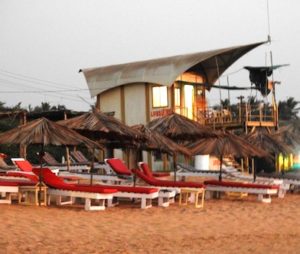 Goas beaches of Siquerim, Candolim, Calangute, Baga, Anjuna, Morjim, Vagator and Arambol are famous. Also popular are Miramar and Dona Paula. In South Goa, Palolem, Benaulim, Majorda, Vraca and Colva attract attention.There are a wide variety of places to stay and eat, suiting every budget. The action point has shifted from Calangute, the paradise of the sixties to adjacent beaches. A number of resorts, hotels and shacks, restaurants and eateries have sprung up. Therefore, the dividing line between Calangute and Baga no longer exists. Anjuna Beach is famous for its Wednesday flea market and its ability to attract all kinds of eccentrics and die-hard hippies.
Goas beaches of Siquerim, Candolim, Calangute, Baga, Anjuna, Morjim, Vagator and Arambol are famous. Also popular are Miramar and Dona Paula. In South Goa, Palolem, Benaulim, Majorda, Vraca and Colva attract attention.There are a wide variety of places to stay and eat, suiting every budget. The action point has shifted from Calangute, the paradise of the sixties to adjacent beaches. A number of resorts, hotels and shacks, restaurants and eateries have sprung up. Therefore, the dividing line between Calangute and Baga no longer exists. Anjuna Beach is famous for its Wednesday flea market and its ability to attract all kinds of eccentrics and die-hard hippies.
South Goa
The main city in South Goa is Margao. From here, buses are available to Vasco da Gama, where the rail terminus is. Also buses ply to the beaches of Bagmalo, Colva and Benaulim. Colva with its pristine white sands was once extremely polpular but has been overshadowed by quieter beaches. There is a wide-range of accommodation, restaurants and shacks.
Wild life sanctuaries
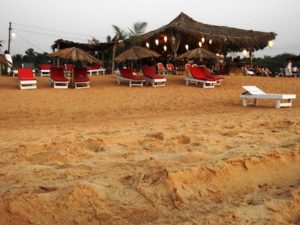 Bondla, Molem and Catigao Wild Life sanctuaries are worth a visit. Bondla is the most popular of the three because of its easy accessibility. Here, wild boar and sambar can be spotted.
Bondla, Molem and Catigao Wild Life sanctuaries are worth a visit. Bondla is the most popular of the three because of its easy accessibility. Here, wild boar and sambar can be spotted.
Cuisine
Some of the specialties of Goan cuisine include vindaloo, sorpotel and xacuti. Bebinca is a Goan dessert that goes very well with vanilla ice cream. The local spirit feni, made from either coconut or cashewnut, is famous.
Transport
Apart from the lackadaisical buses and expensive taxis, a popular means of transport is motorcycle taxis. Motorcycles and bicycles are also available on hire.
Best Season
Oct to March is considered the best season. However, if you can tolerate the soaring temperatures, April and May finds Goa in a quiet, lethargic mood. And the sea is still calm enough to swim in. More recently, Goa is being promoted as a monsoon destination.

Leave a Reply